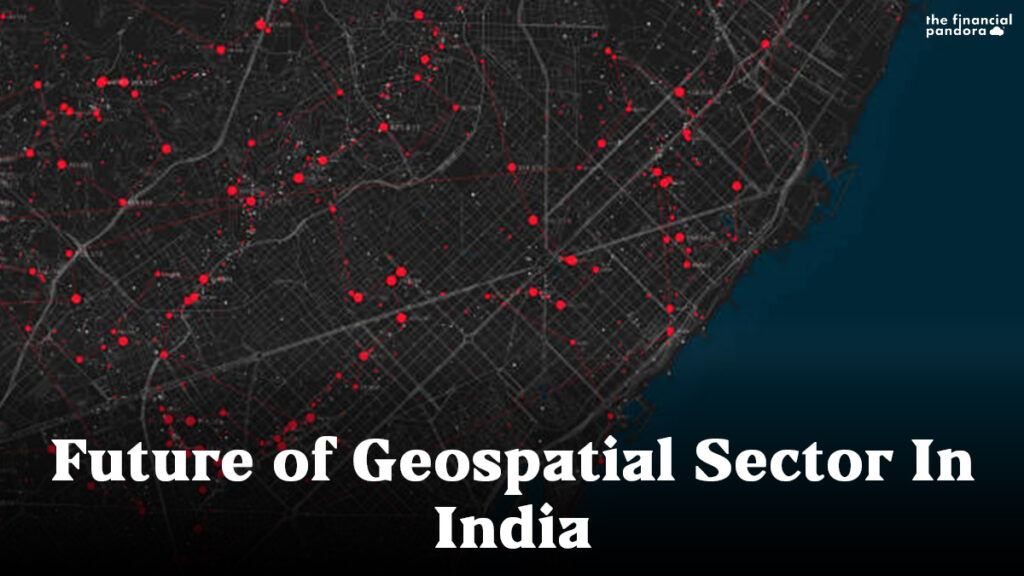The world has changed drastically since the advent of COVID-19 disease towards the end of 2019. The whole world was bombarded with quite a few problems, be it regarding the workforce and where to work from or the businesses’ supply chains being disrupted. Some economies were able to handle the disturbances better than others. If we look back and analyze, we can see that the economies with superior digital infrastructure and technology could take themselves much better. One of the lesser-known technologies that played a significant role in helping nations revives was “Geospatial Technologies.”
We all know how we have glued our eyes to the geographical data dashboards during this pandemic to understand the story of rising cases, finding out vaccination centers, and much more. Governments and institutions have used them to handle the situation on the ground, rebuilding supply chains.
In February, the Government of India’s (GOI) Department of Science and Technology announced that they would draft a new National Geospatial Policy (NGP) and the Indian geospatial sector was very excited about this announcement. Let’s understand why? But before that, it’s imperative to have a basic understanding of what geospatial data is.
What is Geospatial Data?
According to the Federation of Indian Chambers of Commerce and Industry (FICCI), “Geospatial technology broadly includes mapping and surveying techniques, remote sensing, photogrammetry, cartography, Global Positioning Systems (GPS) and Geographical Information Systems (GIS). With its unique ability for acquisition, integration, and analysis of geographically-referenced spatial information, this technology has in recent times been recognized as an effective tool for planning, management, and decision making locally and globally.”
In simple terms, geospatial data is anything artificial or natural below or above the ground. It can include boundaries, natural phenomena, weather patterns, and mobility data. It is a complex technology but an integral part of the world we live in. Over the years, there has been advancement in the way geospatial data is acquired. Some of the methods used today are ground-based surveying techniques, LIDAR, RADAR, and satellite-based sensing, among others.
History around the Geospatial Policy
The predecessor of NGP 2021 is the Geospatial Information Regulation Bill of 2016. After the terrorist attack in Pathankot in 2016, the National Investigation Agency (NIA) concluded that the attack was harmonized with the help of social media sites (Google and Facebook).
After this incident, the MoHA (Ministry of Home Affairs) of the Government of India came up with the draft of GRIB. MoHA proposed fines of up to 100 crores and jail time for organizations/individuals involved with geospatial data production. This affected many businesses like who relied on externally produced geospatial data.
Before the NGP, there were strict restrictions on the production, storage, usage, and sale of geospatial data. The sector is governmental agencies such as Survey of India, and private companies need to obtain permission from different governmental agencies to create, collect or disseminate data. In short, the present policy is not conducive for the sector, whereas data has exploded since the e-commerce boom in India.
New Policy and the future of Geospatial sector in India
The DST Government of India has developed new guidelines to deregulate the existing norms and liberalize them. This is because of a few reasons.
- The earlier process took months, if not years, and led to the delay of important projects.
- Presently, the GOI can conduct mapping operations in the whole country. This can take a few decades, which will hinder development.
- Earlier the prerogative of GOI was internal and external security of the country. With time there has been a shift in this policy for the development of the economy (Social, agricultural, business, etc.)
- Encourage the startup ecosystem to participate in the sector.
- Promote collaboration with external agencies to create geospatial data (P’1rivate Public Partnership)
According to Inc42, the geospatial market of India will be valued at 1 Lakh crore market by 2029-30 (the existing market is 15,000 crore). Previously, there had been fewer investments in the sector, but we can expect a boom in private investments in the future with the upcoming bill.
In an article in The Hindu, Rahul Verma, The CEO of MapMyIndia, said,” value creation for there will be unprecedented value creation for the Indian economy and society due to making geospatial data available for general use.”
Geospatial data is crucial in today’s tech world. From last-mile delivery to customize offers based on the location, geospatial data plays a vital role. In the future, when delivery services will be using Unmanned aerial vehicles (UAVs), there will be a high demand for better-quality terrain information. Currently, the sector is in its nascent stages, but we can expect the Indian Geospatial ecosystem to grow with time.
Follow Us @




